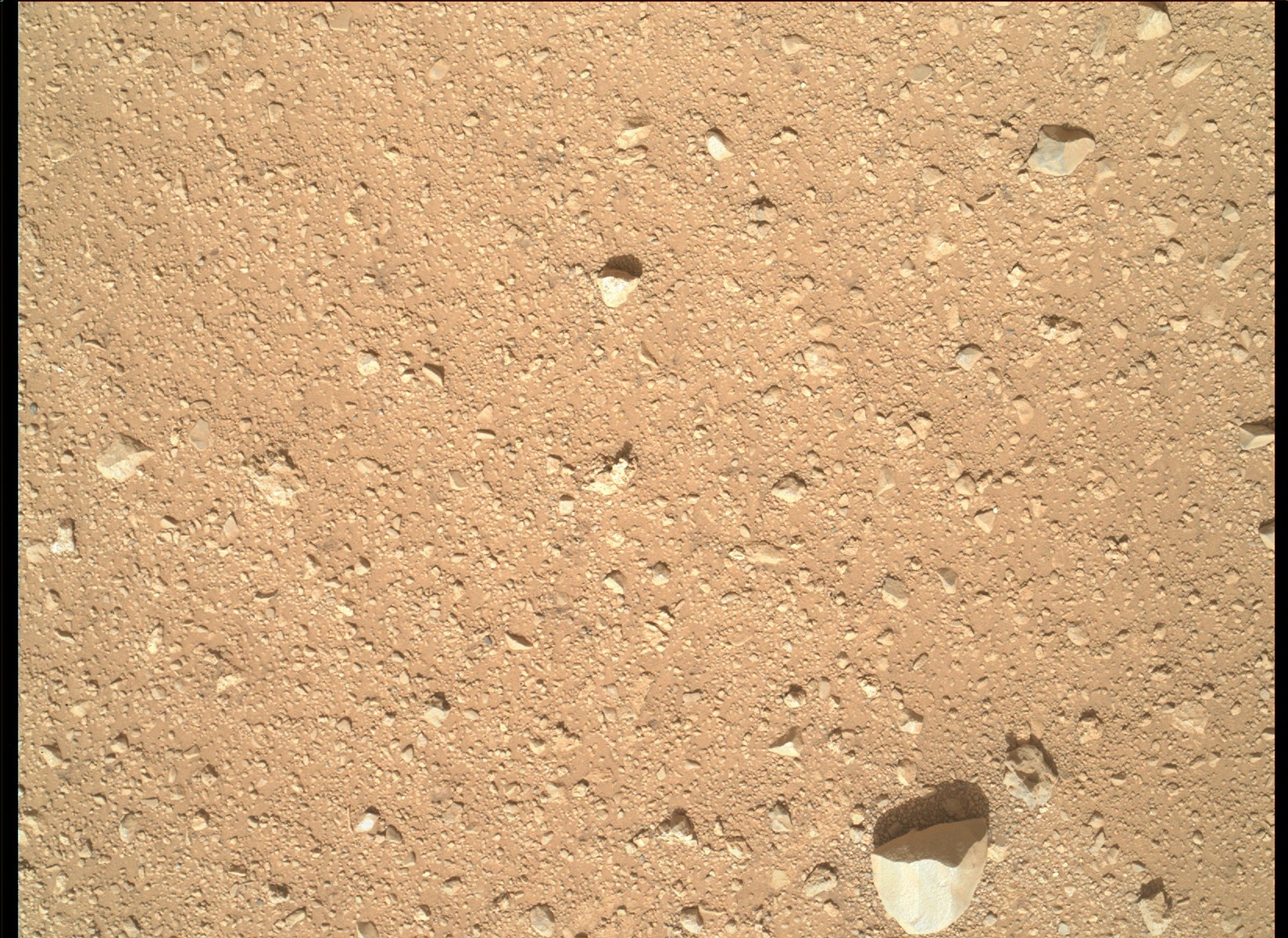Emily Lakdawalla of the Planetary Society did an interesting blog yesterday about a tilted rock formation that was photographed over the weekend. We don't have a whole lot of experience with Martian geology and Curiosity's mission could help answer some questions about the physical chemistry of Mars. The rock formation is different from the existing surface material of the "alluvial fan" and may represent a layered deposit. It's not clear what lies beneath it but it looks like it might have been moved by shifting sand.
The Sol 42 Navcam images are pretty much the same as the Sol 41 images with the exception that they appear to have been contrast enhanced. My anaglyph program approved the enhancement. There were some images of the ground near the MSL and I thought I'd focus on them while we are still on this surface.
The curious thing is that there are not may large rocks on in this area. There are some small rocks imbedded in a sandy matrix with some tiny fragments included. The hardness of the surface suggests that the material may have been compressed and compacted by an overlying layer that has eroded away. The fragments look like crushed stone or construction aggregate. The small size of the components may be the result of an aeolian process which favors smaller particles which have a high surface to volume ratio. Rocks fragmenting while rapidly traveling downhill might also produce small particles. Crushed rock used as a paving material is sometimes refered to as "road metal" with metal being a reference to the material as being an ore. The surface does appear to be a desert pavement. The surface appears to be quite fresh and the enhanced images indicate that the wind has left some streaks in it while moving around the larger stones. In some of the images there are linear arrangements of the smaller pebbles which are probably not due to a random process. Curiosity is now on a downhill slope but there doesn't appear to be any signs of stones sliding or rolling downhill. Rapidly moving stones might leave some bounce marks as they skipped along the surface. Another image taken by MAHLI on Sol 33 shows that the surface is mostly tiny pebbles.
 src: MSL Raw Images
src: MSL Raw Images
No comments:
Post a Comment